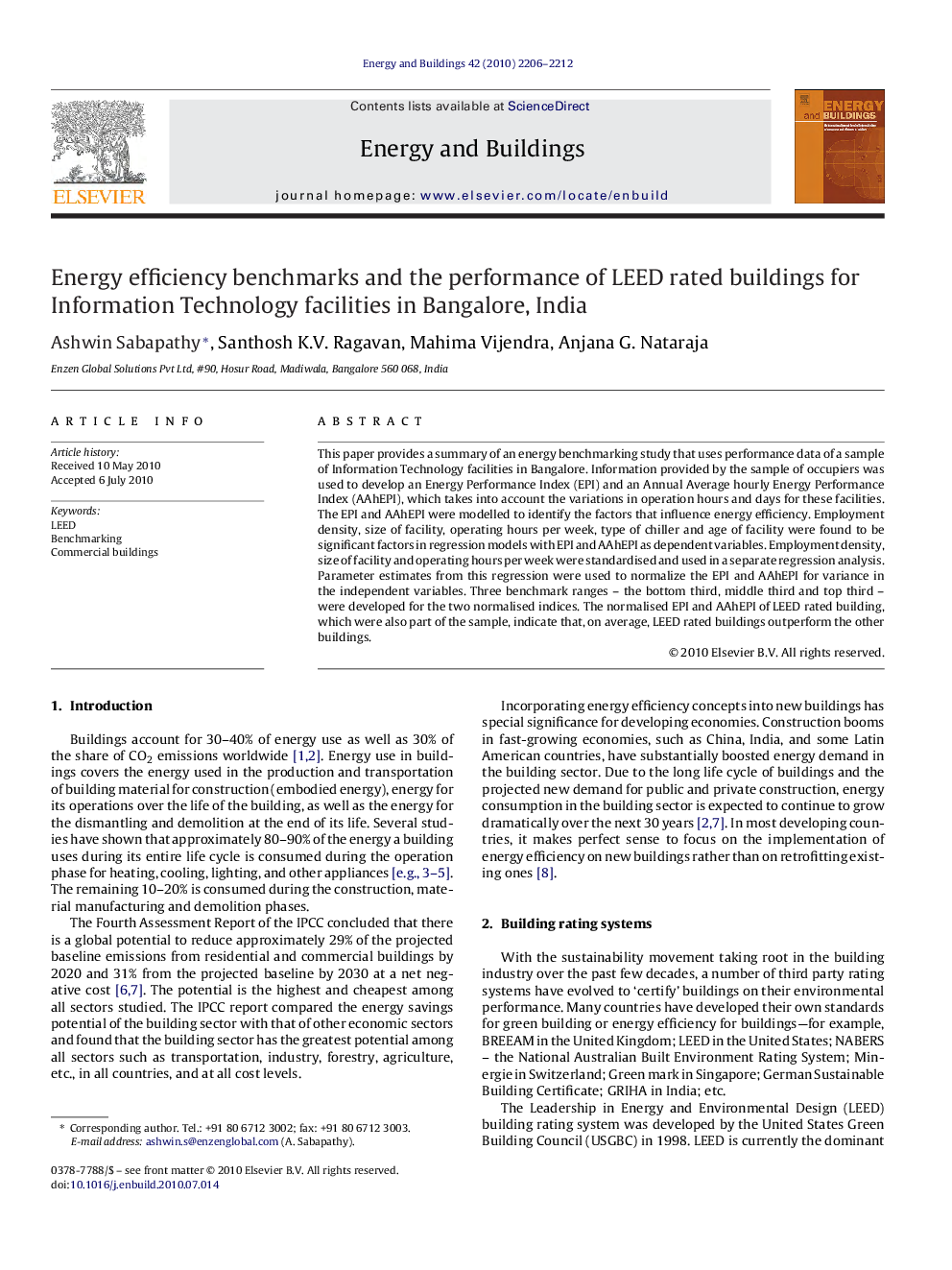| Article ID | Journal | Published Year | Pages | File Type |
|---|---|---|---|---|
| 264184 | Energy and Buildings | 2010 | 7 Pages |
This paper provides a summary of an energy benchmarking study that uses performance data of a sample of Information Technology facilities in Bangalore. Information provided by the sample of occupiers was used to develop an Energy Performance Index (EPI) and an Annual Average hourly Energy Performance Index (AAhEPI), which takes into account the variations in operation hours and days for these facilities. The EPI and AAhEPI were modelled to identify the factors that influence energy efficiency. Employment density, size of facility, operating hours per week, type of chiller and age of facility were found to be significant factors in regression models with EPI and AAhEPI as dependent variables. Employment density, size of facility and operating hours per week were standardised and used in a separate regression analysis. Parameter estimates from this regression were used to normalize the EPI and AAhEPI for variance in the independent variables. Three benchmark ranges – the bottom third, middle third and top third – were developed for the two normalised indices. The normalised EPI and AAhEPI of LEED rated building, which were also part of the sample, indicate that, on average, LEED rated buildings outperform the other buildings.
